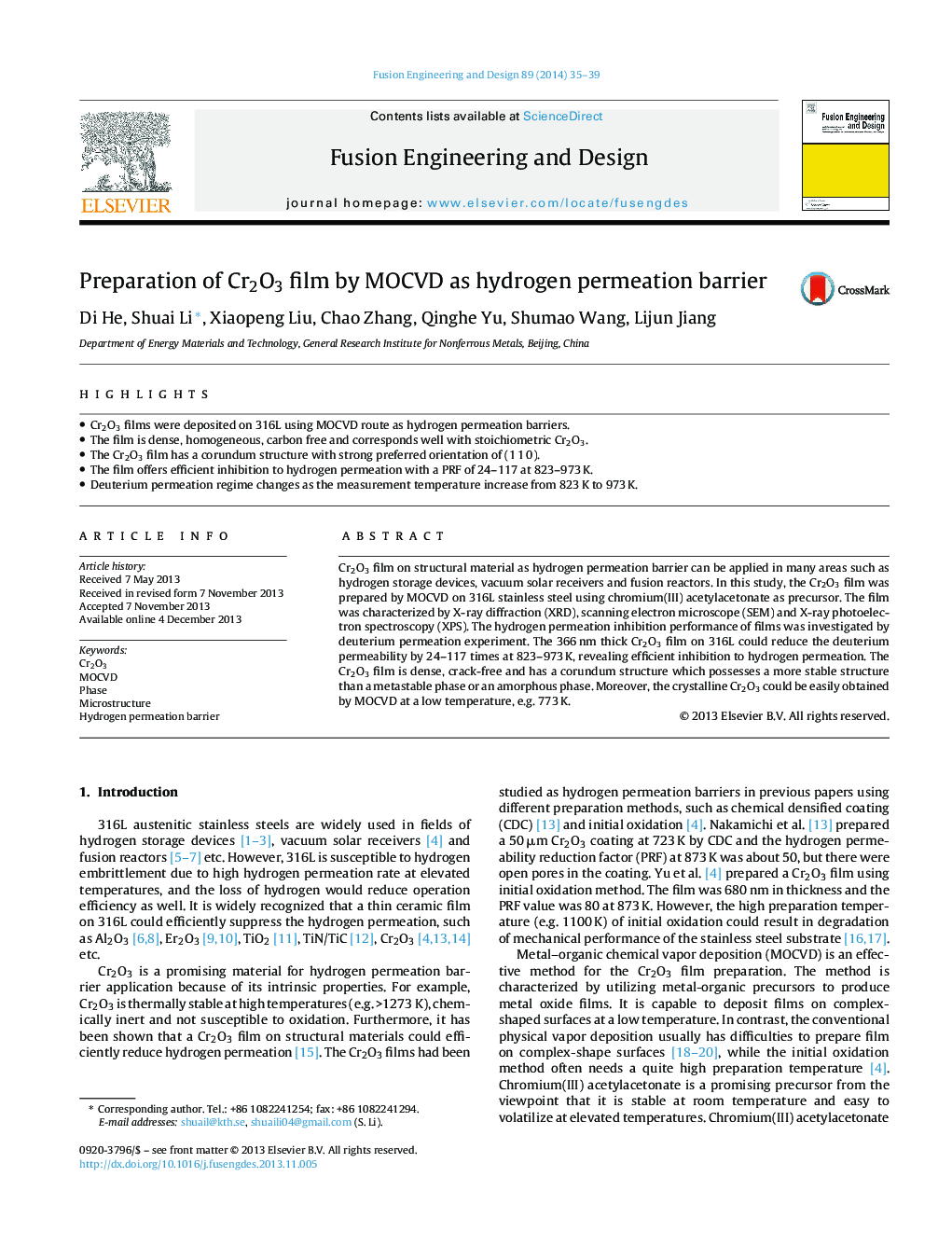| Article ID | Journal | Published Year | Pages | File Type |
|---|---|---|---|---|
| 271639 | Fusion Engineering and Design | 2014 | 5 Pages |
•Cr2O3 films were deposited on 316L using MOCVD route as hydrogen permeation barriers.•The film is dense, homogeneous, carbon free and corresponds well with stoichiometric Cr2O3.•The Cr2O3 film has a corundum structure with strong preferred orientation of (1 1 0).•The film offers efficient inhibition to hydrogen permeation with a PRF of 24–117 at 823–973 K.•Deuterium permeation regime changes as the measurement temperature increase from 823 K to 973 K.
Cr2O3 film on structural material as hydrogen permeation barrier can be applied in many areas such as hydrogen storage devices, vacuum solar receivers and fusion reactors. In this study, the Cr2O3 film was prepared by MOCVD on 316L stainless steel using chromium(III) acetylacetonate as precursor. The film was characterized by X-ray diffraction (XRD), scanning electron microscope (SEM) and X-ray photoelectron spectroscopy (XPS). The hydrogen permeation inhibition performance of films was investigated by deuterium permeation experiment. The 366 nm thick Cr2O3 film on 316L could reduce the deuterium permeability by 24–117 times at 823–973 K, revealing efficient inhibition to hydrogen permeation. The Cr2O3 film is dense, crack-free and has a corundum structure which possesses a more stable structure than a metastable phase or an amorphous phase. Moreover, the crystalline Cr2O3 could be easily obtained by MOCVD at a low temperature, e.g. 773 K.
